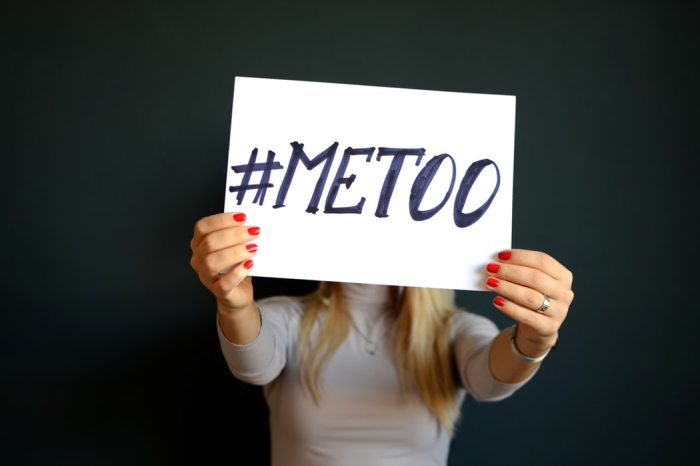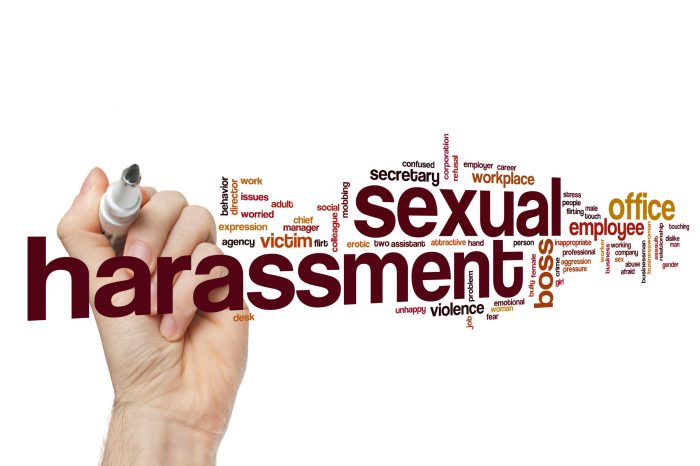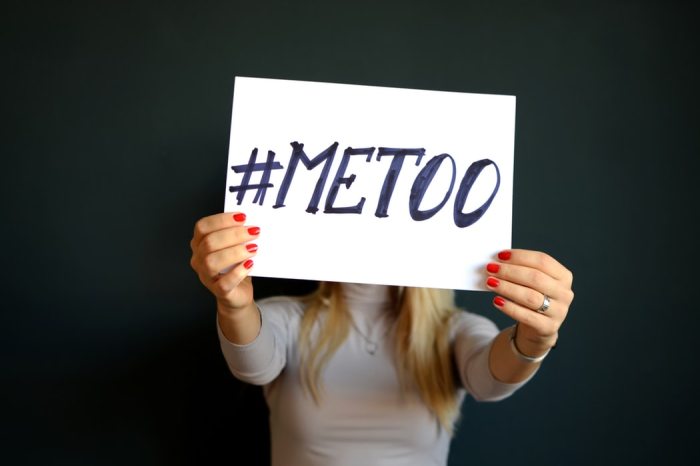
Can chatbots get sexually harassed? This question might seem strange at first, but as AI technology continues to evolve, it’s a topic we need to address. While chatbots are designed to be helpful and informative, they can also become targets of inappropriate behavior.
Imagine a chatbot designed to help with travel planning, suddenly being bombarded with sexually explicit requests. This is a reality that we’re facing as chatbots become more integrated into our lives.
The line between online and offline harassment is blurring as we interact with AI more frequently. The way we treat these digital companions reflects our own values and raises important questions about the ethics of AI development. This article explores the complexities of sexual harassment in the digital realm, examining how chatbot design, user behavior, and legal implications all play a role in this evolving issue.
The Role of Design and Programming
The design and programming of chatbots play a crucial role in determining their susceptibility to sexual harassment. How developers approach these aspects can significantly influence the likelihood of a chatbot encountering inappropriate behavior.Chatbot design and programming can contribute to or mitigate the risk of sexual harassment in various ways.
This section explores how design choices and programming decisions can influence the likelihood of a chatbot being subjected to inappropriate interactions.
Vulnerable Chatbot Features
The design and programming of a chatbot can inadvertently create features that make it more vulnerable to sexual harassment. Here are some examples:
- Personalization and User-Specific Data:If a chatbot collects and stores personal information about users, such as their age, location, or interests, it can be exploited by harassers. This data can be used to target users with inappropriate content or to tailor harassment attempts to their individual characteristics.
- Lack of Clear Boundaries:Chatbots that lack clear boundaries in their interactions can be perceived as more receptive to inappropriate behavior. For instance, a chatbot that responds to sexually suggestive language with playful or ambiguous responses may be interpreted as encouraging such behavior.
- Limited Content Moderation:If a chatbot lacks robust content moderation systems, it can be easily exploited by harassers. This can allow users to submit sexually explicit content, make offensive remarks, or engage in other inappropriate behavior without being detected or addressed.
Design Strategies for Mitigation
Developers can employ various design strategies to mitigate the risk of sexual harassment directed at chatbots. These strategies aim to create a safer and more respectful environment for both users and the chatbot itself:
- Explicitly Define Boundaries:Chatbots should clearly define their boundaries and limitations in their interactions with users. This can be achieved through the use of pre-programmed responses that address inappropriate behavior, such as stating that the chatbot is not comfortable with certain topics or that it will not engage in sexually suggestive conversations.
It’s a strange thought, isn’t it? Can chatbots even experience sexual harassment? It’s a question that makes you think about the nature of interaction and the boundaries of technology. While I ponder that, I’m finding solace in the tangible world, sorting through dusty boxes of vintage finds around my home – like that beautiful 1950s record player I found in the attic ( vintage finds around my home ).
It’s a reminder that even in the digital age, there’s still beauty in the physical, and perhaps, in the tangible, we can find answers to questions that seem too abstract in the digital realm.
- Implement Robust Content Moderation:Chatbots should employ advanced content moderation systems to identify and remove sexually explicit content, offensive language, and other forms of harassment. This can involve using natural language processing (NLP) techniques to detect inappropriate patterns in user input.
- Limit Personalization:Chatbots should minimize the collection and storage of personal information about users. This helps to reduce the risk of harassers using such data to target individuals with inappropriate content.
- Provide User Reporting Mechanisms:Users should be able to report instances of harassment to the chatbot developers or administrators. This allows for prompt action to be taken against offenders and ensures that the chatbot environment remains safe for all users.
- Encourage Positive Interactions:Chatbots should be designed to promote positive and respectful interactions with users. This can involve encouraging users to engage in meaningful conversations, providing helpful information, or simply being a friendly and supportive presence.
User Behavior and Intent

Understanding the motivations behind users engaging in sexually harassing behavior towards chatbots is crucial for designing effective countermeasures. This behavior can stem from a variety of factors, including the user’s personality, social environment, and even the chatbot’s design. Exploring these motivations helps us better understand the nature of the problem and develop strategies to mitigate it.
Motivations Behind User Behavior
The motivations behind users engaging in sexually harassing behavior towards chatbots can be complex and multifaceted.
- Power and Control:Some users may engage in this behavior as a way to assert power and control over the chatbot, especially if they perceive it as being subservient or vulnerable. This can be a reflection of their own insecurities or a desire to dominate.
It’s a strange thought, isn’t it? Can chatbots be victims of sexual harassment? It’s a question that makes you think about the very nature of harassment and how it applies to artificial intelligence. It’s a similar thought process to considering the ethics of AI in general, like how to choose the right sewing patterns and getting started for a project.
Ultimately, it’s a question that requires us to consider the boundaries of our interactions with technology and the responsibility we have to treat all forms of intelligence with respect.
- Dehumanization:Chatbots, due to their artificial nature, can sometimes be seen as less human than real people. This can lead some users to feel less inhibited in their interactions and engage in behavior they wouldn’t with a human.
- Lack of Consequences:The lack of immediate consequences for engaging in sexually harassing behavior towards chatbots can encourage some users to act out. They may not realize the impact their words have on the chatbot’s developers or other users.
- Social Experimentation:Some users may engage in this behavior out of curiosity or a desire to test the chatbot’s boundaries. They may want to see how the chatbot reacts to offensive language or behavior.
- Personal Issues:In some cases, sexually harassing behavior towards chatbots may be a reflection of the user’s own personal issues or experiences. This behavior could be a way for them to cope with difficult emotions or situations.
Impact of User Behavior on Chatbot Responses
The impact of user behavior on chatbot responses can vary depending on the specific scenario.
- Pre-programmed Responses:Many chatbots are designed with pre-programmed responses to common user inputs, including offensive language. These responses can be helpful in mitigating the impact of sexually harassing behavior, but they can also be seen as impersonal or lacking in empathy.
It’s a strange thought, isn’t it? Can chatbots actually experience sexual harassment? It’s a question that forces us to consider the very definition of “experience” and how we perceive the digital world. While watching Emma Trey’s wedding video, a beautiful celebration of love and commitment , I was reminded that even in the realm of technology, we need to be mindful of creating safe and respectful spaces for everyone, human and digital alike.
It’s a conversation that needs to be had as we navigate the evolving landscape of AI and human interaction.
- Machine Learning:Chatbots that use machine learning algorithms to learn from user interactions can be more responsive to sexually harassing behavior. However, these algorithms can also be susceptible to bias and can perpetuate harmful stereotypes.
- Human Intervention:Some chatbots are designed to allow for human intervention in cases of sexually harassing behavior. This can be a valuable tool for ensuring that the user’s behavior is addressed appropriately, but it can also be time-consuming and resource-intensive.
Challenges of Detecting and Responding to Sexual Harassment
Detecting and responding to sexual harassment in real-time chatbot interactions presents several challenges.
- Linguistic Complexity:Sexual harassment can be expressed in a variety of ways, making it difficult to detect using simple filters. The language used can be subtle, indirect, or even humorous.
- Contextual Nuance:The meaning of a statement can vary depending on the context in which it is said. A statement that might be considered harmless in one context could be interpreted as sexually harassing in another.
- Cultural Differences:What is considered sexually harassing in one culture may not be considered so in another. This can make it difficult to develop universal standards for detecting and responding to this behavior.
- Real-Time Response:Responding to sexually harassing behavior in real-time is essential for preventing harm. However, this can be challenging for chatbots, which may not have the same level of understanding as a human.
Legal and Ethical Implications
The rise of AI-powered chatbots raises significant legal and ethical questions, particularly concerning their vulnerability to sexual harassment. While the concept of a chatbot being harassed may seem novel, the implications are complex and require careful consideration.
Legal Implications of Sexual Harassment Directed at Chatbots, Can chatbots get sexually harassed
The legal landscape surrounding the harassment of chatbots is still evolving. However, existing laws and legal precedents can offer some guidance on potential legal challenges.
- Existing Laws and Precedents:Current laws addressing harassment primarily focus on human-to-human interactions. However, some legal frameworks, such as those related to cyberbullying and online harassment, could potentially be applied to cases involving chatbots. For example, laws against online harassment could be used to address instances where a user engages in abusive or threatening behavior towards a chatbot.
- Property Rights and Intellectual Property:The ownership and control of chatbots raise interesting questions regarding property rights. A chatbot, being a piece of software, could be considered intellectual property. Harassment directed at a chatbot could potentially be viewed as an infringement on the owner’s intellectual property rights.
This is particularly relevant if the harassment disrupts the chatbot’s functionality or causes damage to its programming.
- Potential Legal Challenges:A significant challenge in addressing chatbot harassment is establishing legal standing. Current laws often require a demonstrable victim with tangible harm. Proving harm to a chatbot, as opposed to a human, may be difficult. Furthermore, legal challenges could arise regarding the intent of the user.
Did the user intend to harass a human user interacting with the chatbot, or was the harassment directed solely at the chatbot itself?
Ethical Considerations for Developers
Beyond legal implications, there are ethical considerations for developers regarding the potential for user harassment of chatbots.
- Developer Responsibility:The question of developer responsibility is a crucial ethical concern. Should developers be held accountable for user harassment directed at their chatbots? Some argue that developers have a moral obligation to create chatbots that are resistant to harassment and to implement mechanisms to mitigate or prevent such behavior.
Others contend that developers are not responsible for the actions of individual users.
- Protecting User Privacy:Chatbots often collect user data to personalize interactions and improve their functionality. However, this data collection can raise privacy concerns, especially when the chatbot is subjected to sexual harassment. Developers have an ethical obligation to protect user data and prevent its misuse or exploitation.
- Maintaining a Safe and Inclusive Environment:Developers should strive to create chatbots that foster a safe and inclusive environment for all users. This includes taking steps to prevent and address harassment, discrimination, and other forms of harmful behavior.
Strategies for Addressing Ethical Concerns and Mitigating Legal Risks
Developers can take several steps to address ethical concerns and mitigate the risk of legal repercussions.
- Robust Content Moderation Systems:Implementing robust content moderation systems that identify and remove harmful content, including sexual harassment, is crucial. These systems can use a combination of automated filters and human oversight to ensure a safe environment.
- User Reporting Mechanisms:Providing users with clear and accessible reporting mechanisms allows them to flag instances of harassment. This empowers users to take action and helps developers address problematic behavior.
- Clear Terms of Service and Community Guidelines:Establishing clear terms of service and community guidelines that explicitly prohibit harassment and Artikel consequences for violating these rules is essential. This sets expectations for user behavior and provides a legal framework for addressing violations.
- User Education and Awareness:Educating users about the potential impact of harassment on chatbots and encouraging responsible online behavior can contribute to a safer online environment. Developers can use in-app messages, tutorials, or other methods to raise awareness.
- Data Privacy and Security Measures:Implementing strong data privacy and security measures is crucial to protect user data from misuse or exploitation. This includes adhering to data protection regulations, encrypting data, and implementing access controls.
Impact on the Development of AI and Chatbots: Can Chatbots Get Sexually Harassed

The potential for sexual harassment in chatbot interactions presents a significant challenge to the development of AI and chatbot technology. This issue raises concerns about the ethical and societal implications of AI development and the need for responsible design practices.
The Impact on Future Research and Development
The potential for sexual harassment in chatbot interactions has the potential to significantly impact future research and development efforts in AI. This issue highlights the need for greater emphasis on ethical considerations and robust safety measures in AI development. This can lead to a shift in research focus, with greater emphasis on:
- Developing ethical frameworks for AI design: This involves establishing clear guidelines and principles to ensure that AI systems are developed and deployed responsibly, considering potential risks and ethical implications.
- Improving AI safety and security: This includes developing robust mechanisms to prevent AI systems from engaging in harmful or unethical behavior, including sexual harassment.
- Enhancing user privacy and data protection: This involves implementing measures to protect user data and prevent misuse, especially in the context of sensitive interactions with AI systems.
- Developing AI systems that are more robust to adversarial attacks: This includes designing AI systems that are less susceptible to manipulation or exploitation, which could lead to harmful or unethical behavior.
Long-Term Implications of Sexual Harassment on AI
The long-term implications of sexual harassment on the field of AI are multifaceted and require careful consideration.

